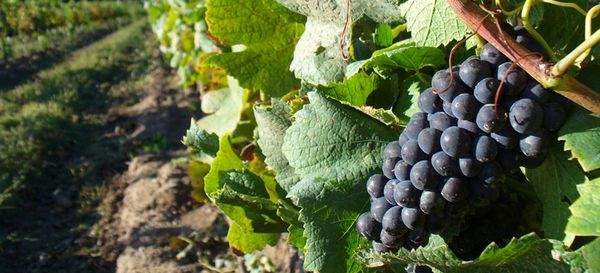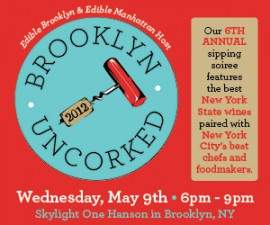Day Dreaming About Pinot Noir in the Niagara Region
By Bryan Calandrelli, Niagara Regional Correspondent
When I venture out to other wine regions in New York State and introduce myself as being from the Niagara region, the most common response is…”Oh pinot noir, huh…how’s Warm Lake doing?” I usually give a generic answer and then talk about the other wineries that have just opened and more importantly, the other grapes that have been planted.
 The reality is that Warm Lake Estate and the creation of the Niagara Escarpment AVA has intentionally branded the region for pinot noir. Given the climate, length of growing season and abundance of clay over limestone hillsides, people keep making the comparison to Burgundy again and again. My fear is that this builds an almost unachievable level of expectation for these young wineries and young vines.
The reality is that Warm Lake Estate and the creation of the Niagara Escarpment AVA has intentionally branded the region for pinot noir. Given the climate, length of growing season and abundance of clay over limestone hillsides, people keep making the comparison to Burgundy again and again. My fear is that this builds an almost unachievable level of expectation for these young wineries and young vines.
I do believe that we have the clearest potential to make distinctively Burgundian pinot noir in the state, and by that I mean, pinot with racy acidity, earthiness, minerality and a concentrated elegance. But it’s just going to take more wineries, with small batches and experienced winemakers to begin to show how good pinot can really be up here.
As of today the wineries growing pinot noir are Warm Lake Estate, Freedom Run Winery, Spring Lake Winery, Leonard Oakes and the soon-to-open Victorianbourg Winery. There are a few other growers also joining in the fun, but if you came to the area today, only Warm Lake Estate and Freedom Run would have any pinot ready to drink.
My take on previously released vintages is critical. Warm Lake seems to be making a memorable wine every other year. The 2003, from what I’ve read in Wine Spectator, is great. The 2005 is easily the most interesting pinot I’ve had from the east coast. Warm Lake’s 2007 might still be too young to assess its potential. It has great color and extraction with some noticeable earthy funk, but there’s a lot of new French oak masking the fruit. It could very well balance out with time but I’m not sure the average visitor will hold it long enough to find out.
As for Freedom Run, its 2007 Estate Pinot Noir has been well received. The combination of young vines and a hot year seems to have made a once in a lifetime wine that stands up well to many California pinots, though it's definitely not Burgundian in style. Their 2008 vintage will be much more typical of a cool region pinot, revealing more of what you can expect year to year — a lighter, racier wine that may not win over those looking for big fruit-forward pinots. These might just be the same people that are buying their 2007 vintage.
While there isn’t one wine I would sneak into Paris for a blind tasting yet, I can assure you that I’ve tasted some promising pinot noir grown in the Niagara and across the river in Niagara, Ontario. There’s plenty of talk about minerals, limestone and terroir these days, and there’s no doubt that we have all of the above. We are just waiting for the growers and winemakers to figure out how to take advantage of these conditions.
I’m sold on the idea that it will happen sooner than later, and let’s just say that if I was planting my vineyard today, there would be a significant number of pinot noir vines along with my cabernet franc, chenin blanc and gruner veltliner…A man can dream right?



















Bryan,
Your comments about the warmth of the ’07 vintage leads to a very important question: how does the weather fair in other “average” vintage years?
With the Finger Lakes always being accused of being too cool in many years to properly ripen many reds, I’m not inclined to think that Niagara is any warmer, if at times just a tiny bit cooler. How would you describe the climate there?
BTW, I think I need to visit at some point!
Jason
The 2007 as good as it was, isn’t all that exciting to me because I’m always looking for what typically works or doesn’t work for a region. So in the case of the FRW pinot, I find the 08 much more exciting.
To answer your climate question, I quote Thomas Lazlo, VP of winemaking at Heron Hill in reference to my question of the difference between growing rielsing in the FL and in the Niagara Region of Ontario.
His response was “It’s to warm up there for great riesling. If you can consistently ripen merlot, then you’re too warm for riesling.”
From what I’ve learned, the greatest moderating factor in the climate of the FL is actually Lake Ontario. The closer you are to that lake, generally speaking (west of rochester) the longer your growing season.
I’ve seen some well extracted red wines from 2008 from a few wineries up here, and I don’t believe we need years like 2007 to make quality red wines. And when I say this I am only talking about a few serious growers who are respecting lower crop yields.
Hope that answers your question.
Aw, a quote from the infamous Thomas Lazlo (who I would still like to meet)!
Interestingly enough, Syracuse’s proximity to the eastern portion of Lake Ontario makes our lives miserable and even snowier than Rochester, but I understand what you are saying about the lake’s effect on climate near the western portion.
Re: Thomas Lazlo’s quote - can the Niagara region consistently ripen merlot?
I’m wondering the same, Rich. I’m not aware that the Niagara region is consistently getting ripe Merlot, but I plead ignorance.
I’m not sure any L.I. winemakers would start buying merlot grapes from the region any time soon. There’s a night and day difference from the extended growing season of L.I. in terms of brix levels.
The Niagara region is diverse. Pinot Noir is more often planted on the cooler higher elevation slopes furthest from Lake Ontario here. You will find merlot planted ideally 1-2 miles from the lake on more flat to rolling sites where it benefits from over 220 frost free days.
I do quote Thomas because he has worked in both the Niagara, ON region and the FL.